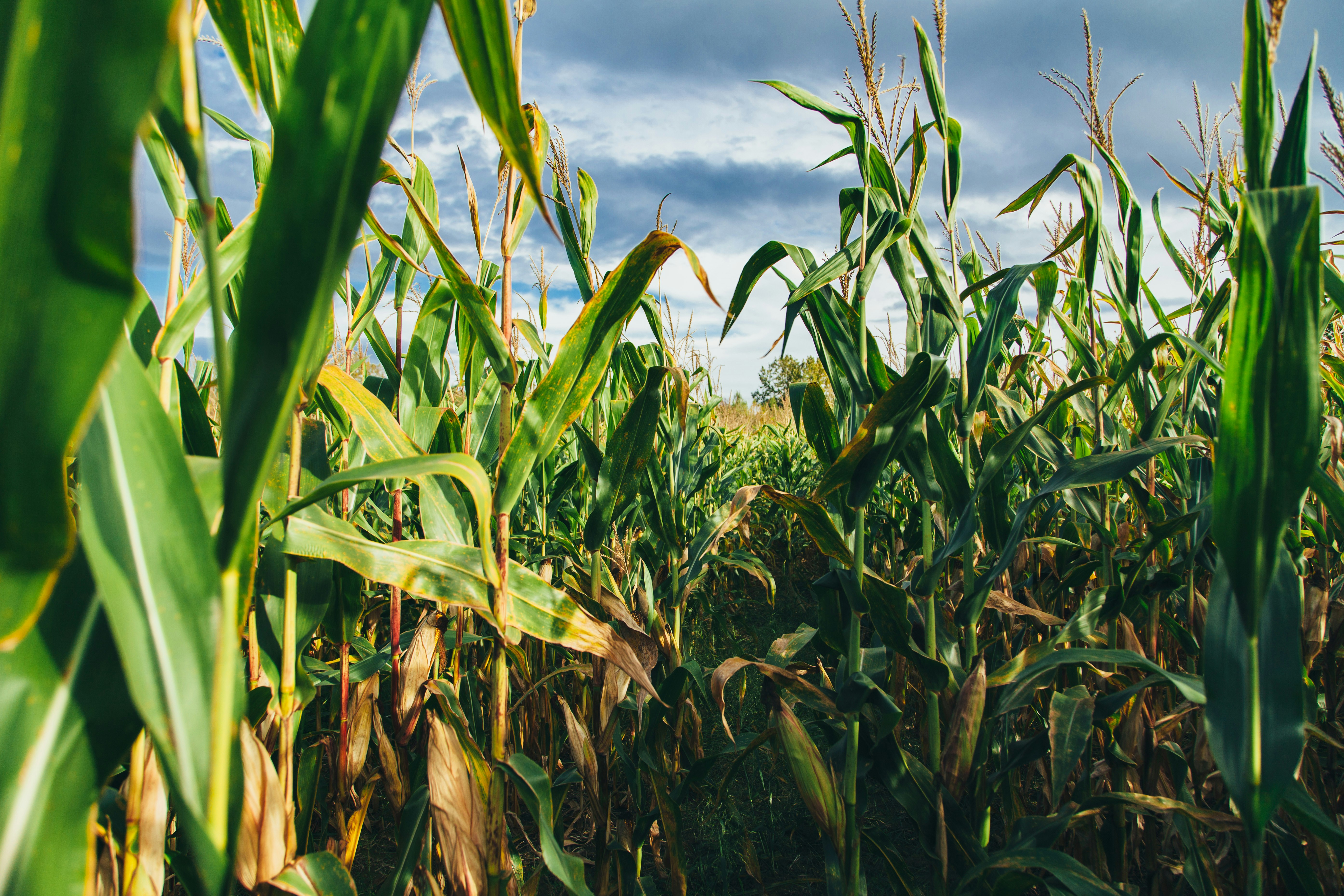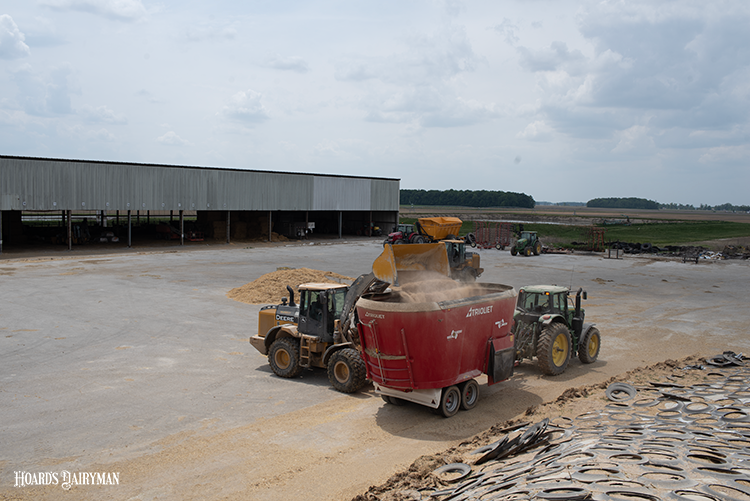You may have seen the meme that shows a beef animal with a mouthful of grass and a caption saying something like, “I turn grass into steak. What is your superpower?” A dairy version of that might be a cow eating hay and bragging about their magical power of turning feed into products such as cheese and ice cream. But, if we are honest in both situations, we really lean heavily on corn to fuel these superpowers.
It’s not necessarily a bad thing, but I do hope over time we can use less primary grain to make milk and beef. As long as there are food-insecure humans in the world, we should let them eat first, and the ruminants, due to their superpowers, eat second. In the meantime, let’s be sure we are leveraging our corn usage as effectively as possible. One of the best ways to ensure this is to optimize corn processing.
As I work on diets in different regions of the U.S., I see two primary methods of corn grain processing: fine ground and steam flaked. In my experience, other lesser used approaches are dry rolled, high moisture rolled, ground, and earlage.
The chosen method seems to be mostly determined by what is available in a particular geography. But, at times, bucking this local trend might be better for supporting more milk and managing feed cost.
Why does it matter so much? The answer here is multifaceted. First, corn grain supplies a significant portion of the energy in dairy and feedlot rations. The difference is related to the maturity of the kernel at harvest.
Over the past few years, the amount of corn silage in U.S. dairy rations has been on the rise. With feed rates commonly over 20 pounds of dry matter, a significant amount of starch is supplied from corn silage.
We have come a long way in the past 20 years in terms of processing corn silage, ensuring that the starch is fermented in the rumen. In the old days, we had corn cob discs left in the feedbunk; in today’s world, we test kernel processing scores in real time during harvest. This advancement in harvest technology has been an enhancement for milk production.
A source of energy
The starch in corn silage can be some of the most available energy in a dairy diet. First, the stage of maturity of the corn kernel at silage harvest allows for adequate ruminal starch availability. Compare this soft and moist corn kernel in well-fermented silage to a hard, dead corn kernel in dry shelled corn. Yes, we can process it to make it more available, but the dry shelled kernel will likely never have the same starch availability as the processed corn kernel in corn silage.
High-moisture corn grain and earlage have some of the same advantages as starch in corn silage. However, these three highly available options have three challenges: storage, stability, and freight. All of these require equipment being kept in close proximity to the farm. Dry shelled corn has the distinct advantage in all three areas. It can be stored, hauled long distances, and be processed for feeding when needed. For this reason, much of the starch we get from corn will continue to come from dry shelled corn. Processing it well enhances its value, reduces feed cost, and maximizes cow performance.
I took a minute and looked at two very different diets I have been working on to gauge the level of energy contribution corn grain has had in each. First, I looked at an alfalfa-based ration using ground corn in the southwestern U.S. In this diet, the 500-micron ground corn was supplying 50% of the energy in the diet. In a corn silage-based diet from the Upper Midwest, ground corn was contributing 30% of the ration energy.
Energy is not the only nutrient supplied or facilitated by the starch in corn. This is a bit less intuitive since we think of corn starch being one of the most energy-dense nutrients in dairy diets. The nutrient of interest here is metabolizable protein. How does a carbohydrate like starch increase the volume of a protein nutrient? The answer is back to the superpower conversation above.
While the grass is being converted to steaks and the hay converted to butter and ice cream, the starch in the diet is fueling fermentation by working with nitrogen in the rumen. This action creates energy for the cows as the carbohydrates are fermented and creates microbial protein to supply the majority of the protein needs of the animal. So yes, starch in corn creates protein for milk flow, casein, body weight gain, and contributes to the needs of a growing fetus.
Prepare the source
To achieve the highest efficiency possible, the starch in corn must be made available to the microbial fermentative process in the rumen. For silage, this happens at harvest in the kernel processing unit of the silage chopper. For dry shelled corn, it happens at a feed production facility or via on-farm processing. No matter where this processing occurs, it must be completed with a high level of certainty. Failing to do so will impede milk production, animal growth, increase feed cost, and will have a negative impact on farm profitability. In short, it is a big deal. We should never pick up a handful of processed corn and say, “It’s good enough.”
Any number of processing combinations can work well in various diets. Rations high in alfalfa, small grain silages, grasses, or forage sorghums might be a good fit for flaked corn where excessive fine particles from ground corn could be less than ideal in the bunk. Flaked corn is the fastest starch rate option for dry shelled corn, though. So, if upward of 20 pounds of dry matter must be fed to achieve adequate dietary starch levels, perhaps a blend of flaked and fine ground corn could hit the sweet spot.
Using seven-hour starch analysis from a lab can help dial in diets where you can effectively adjust grain processing to find the perfect fermentation rate. Synchronizing this rate with the available protein ingredients in the diet will set the rumen and the cow up for success. Adding analytical steps such as visual corn particle passage using manure screens, or even sending in samples for fecal starch analysis, can elevate the potential for a fine-tuned diet. Remember, corn hybrids can have different kernel characteristics, which can cause the starch in corn to be slower (vitreous) or faster (flowery) independent of how it is processed. So, testing corn samples that seem to not be feeding well for prolamin may be suggested.
The superpower of the cow occurs in the rumen. The superpower of the dairy owner probably happens at silage harvest in the case of corn silage-based rations. The superpower of the dairy using ground corn happens during screen and hammer management. And lastly, the superpower of a good nutritionist is shown by a dynamic formulation model, a good forage/ingredient analysis report, and a strong cup of coffee.










